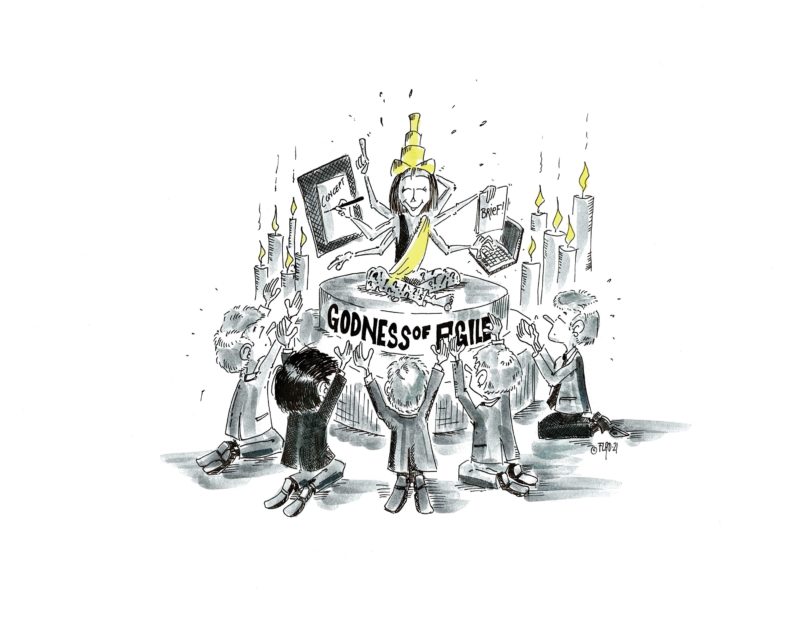Woolley Marketing: Are you agile or not?
It's a recommendation, rather than a religion, suggests Trinity P3 founder and global CEO Darren Woolley.
There are always new business trends (or fads) coming along: Six Sigma, matrix management, business process re-engineering and of course, agile. Like all corporate fads it has its gurus, disciples and devoted followers, who zealously proclaim its application and advantages.
They preach from the technology transformation pulpit, using their own unique language of tribes, squads and sprints, often leaving their audiences feeling they are missing out on the latest trend that will catapult their organisations into the productivity and performance stratosphere.
Marketing is definitely not immune. Marketers increasingly find themselves in organisations that have embraced agile as an operating model and are left to navigate how to make marketing deliver the promised benefits. This is especially acute for marketers in software and engineering based companies. But the agile gospel and its devotees are also taking over financial services and telecommunications companies too.
The agile movement originated in 2001, with the publications of the “Manifesto for Agile Software Development” written by a group of software developers who were looking for an innovative way to speed up software development. But somewhere along the way, this transitioned to not just a project management methodology, but an organisational design philosophy.

Cartoon by Dennis Flad, published with permission (2021)
Just to clarify here, I personally like to distinguish between two basic interpretations of agile. The first is lowercase agile, which is an adjective that means “able to move quickly and easily”. The second, is the uppercase version, agile, which is a noun and is “relating to or denoting a method of project management, used especially for software development, that is characterised by the division of tasks into short phases of work and frequent reassessment and adaptation of plans.”
It appears agile’s big leap from methodology to organisational philosophy occurred when Spotify became famous for their agile organisation approach, explained in two videos on YouTube by agile/lean coach, Henrik Kniberg, who was at Spotify at the time. This has become so ubiquitous since then that many refer to the ‘Spotify model’ as the blueprint for their organisational transformation. But as Kate Hobler, at Scrum.org points out: “How many organisations working according to the so-called “Spotify Model” do you know? Because I know none. Including Spotify itself.”
So, where does this leave marketers wanting or needing to be agile or more agile? The fact is that Agile is not a single universal principle, no matter what the devotees may preach. Agile is a philosophy, a manifesto, a set of principles. It is not a process to be slavishly transplanted from one organisation to the next. It actually relies significantly on organisational culture to be successful. It can bed particularly successful for particular types of projects and processes. But not even Spotify, the darling of the agile movement, undertakes all business activities with an agile approach. Neither should marketing.

I have seen it very effectively applied to performance marketing, to allow constant progress and improvement, yet fail miserably when used to develop brand strategy. A CMO shared with me that they applied agile to a particular campaign project to break through the organisational barriers and obstacles that had typically stymied projects in the past. But that CMO could not imagine maintaining that level of intensity for day-to-day marketing activities.
Another marketing lead shared that adopting an Agile methodology had more than doubled their team’s daily quota of meetings, with sprint planning, daily scrums, sprint reviews, retrospectives and scrums of scrums meetings all filling an already bulging schedule.
And while agencies, particularly those with a strong technology or digital culture, often have agile at the core of their operating model, I have yet to witness an agency using agile for the creative or idea-generating process, beyond the same process advertising creative departments have used since creative teams were first placed together in the 1960s.
So, before you join the agile cult, or perhaps if you are looking to escape it, it is worth remembering that agile provides a framework for a way of working. It is certainly not meant to be a way of life, or a way of business. There are business practices and many marketing practices that can and would benefit from adopting and implementing an agile approach to increase productivity, speed to market and performance. But it is not a religion and should not demand complete devotion of all involved. Otherwise you could find yourself worshipping at the altar of a false God.

Darren Woolley is the founder and global CEO at Trinity P3. Woolley Marketing is a regular Mumbrella column.



